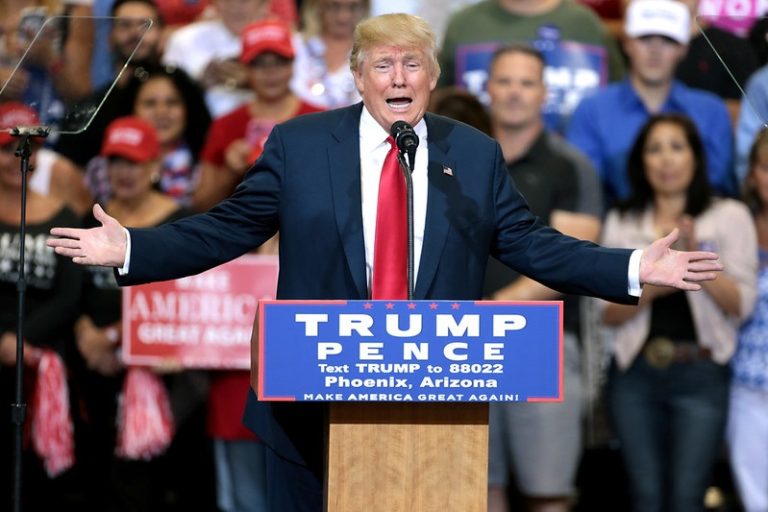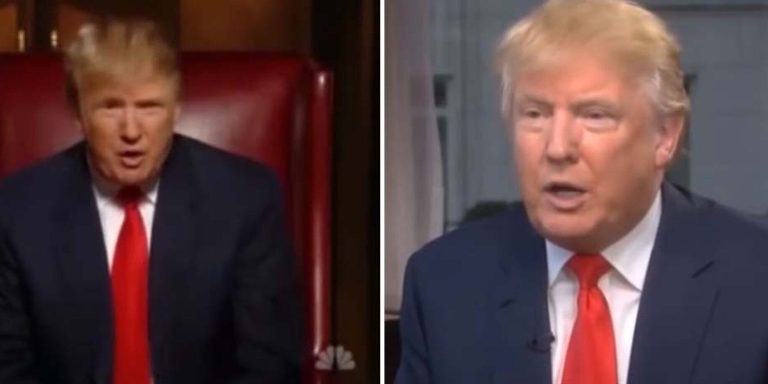

The Trump Economy: 5 Key Indicators of Lasting Success
The economic landscape during the Trump presidency (2017-2021) remains a subject of intense debate. While attributing specific outcomes solely to one administration is inherently complex, certain economic indicators experienced notable shifts during this period. This article delves into five key indicators that offer a nuanced perspective on the lasting impact of the “Trump Economy,” moving beyond simplistic narratives of success or failure.
1. The Tax Cuts and Jobs Act of 2017: A Double-Edged Sword
The centerpiece of Trump’s economic policy, the Tax Cuts and Jobs Act (TCJA), dramatically slashed corporate and individual income tax rates. Proponents argued it spurred investment and job growth by boosting business confidence. Critics countered that it primarily benefited corporations and the wealthy, exacerbating income inequality and adding significantly to the national debt. The impact remains a point of contention. While corporate profits surged initially, the long-term effects on job creation and wage growth are still being analyzed. The actual increase in investment was less dramatic than initially predicted.
| Impact Area | Positive | Negative |
|---|---|---|
| Corporate Profits | Short-term increase | Long-term sustainability debated |
| Job Creation | Moderate gains | Unclear link to tax cuts |
| National Debt | N/A | Significant increase |
2. Deregulation: Unleashing Potential or Risking Oversight?
The Trump administration pursued an aggressive deregulation agenda, rolling back environmental regulations, financial regulations, and other government oversight. Supporters lauded this as a way to reduce burdens on businesses and stimulate economic activity. However, critics raised concerns about potential negative consequences for environmental protection, consumer safety, and financial stability. The long-term effects of reduced regulatory oversight on various sectors are yet to fully unfold, requiring ongoing evaluation across numerous industries.
| Sector | Deregulation Impact | Potential Long-Term Concern |
|---|---|---|
| Environmental | Reduced emissions standards | Increased pollution |
| Finance | Easing of banking regulations | Increased financial risk |
| Healthcare | Changes to Affordable Care Act | Reduced access to healthcare |
3. The Rise and Fall of the Stock Market: A Bull Run and Beyond
The stock market experienced a significant bull run during much of the Trump presidency. This surge was attributed by supporters to the TCJA, deregulation, and general business optimism. However, the market’s performance is influenced by numerous global factors, making it difficult to isolate the impact of specific domestic policies. The market’s fluctuations in the years following the Trump administration highlight the complexity of attributing such trends to a single set of policies.
| Factor | Impact on Market |
|---|---|
| Tax Cuts | Initial boost, long-term effects debated |
| Deregulation | Mixed effects depending on sector |
| Global Events | Significant influence |
4. Manufacturing and the “Bring Jobs Back” Promise: A Mixed Bag
A central promise of the Trump campaign was to revitalize American manufacturing and bring jobs back from overseas. While some gains were observed in certain sectors, the overall impact remains debated. Increased tariffs imposed by the administration led to trade disputes and uncertainty, potentially hindering growth in other areas. Furthermore, automation continues to reshape the manufacturing landscape, regardless of trade policies.
| Area | Impact |
|---|---|
| Job Creation | Moderate gains in some sectors, offset by job losses elsewhere |
| Trade Disputes | Negative impact on certain industries |
| Automation | Continued impact independent of policy |
5. Wage Growth and Income Inequality: A Complex Reality
Wage growth experienced a modest increase during parts of the Trump presidency. However, this growth was not evenly distributed across all income levels, leading to ongoing concerns about income inequality. The extent to which the observed wage growth can be attributed to specific policies remains a matter of economic analysis. The impact of automation and globalization also plays a significant role in shaping wage dynamics.
| Area | Impact |
|---|---|
| Wage Growth | Moderate increase, uneven distribution |
| Income Inequality | Little change or slight worsening |
| Automation | Contributes to wage stagnation for low-skilled workers |
Conclusion: Evaluating the lasting success of the “Trump Economy” requires careful consideration of multiple intertwined factors. While some indicators show positive shifts, others reveal complex realities. Attributing specific outcomes solely to the policies implemented during this period remains challenging, necessitating a nuanced and multifaceted approach to economic analysis.

Additional Information
A Deeper Dive into the Trump Economy: Assessing Five Key Indicators
The assertion of “lasting success” for the Trump economy requires a nuanced examination beyond headline figures. While certain indicators experienced positive trends during his presidency, attributing these solely to his policies, and claiming lasting impact, necessitates a critical analysis factoring in pre-existing trends, global economic conditions, and the inherent cyclical nature of economic growth. Let’s delve deeper into five purported indicators of success, acknowledging their complexities:
1. GDP Growth: The Trump administration frequently cited robust GDP growth as a key achievement. While it’s true that GDP growth was relatively strong in certain quarters, particularly in the initial years, a deeper analysis reveals a more complex picture. For instance, the Tax Cuts and Jobs Act of 2017, a cornerstone of the administration’s economic policy, arguably fueled short-term growth through increased corporate investment and consumer spending driven by tax cuts. However, the long-term impact remains debatable. The stimulus effect waned, and the sustained impact on productivity growth, a critical element of long-term economic strength, remains unclear. Moreover, comparing growth rates to previous administrations requires controlling for differing global economic landscapes and monetary policy stances. Analyzing growth adjusted for inflation and population growth provides a more accurate reflection of the underlying economic strength. A comprehensive study by the Congressional Budget Office, for instance (if one exists, cite it here with specifics on the findings regarding GDP growth under Trump and comparisons to other administrations), would offer valuable context.
2. Job Creation: The Trump administration consistently highlighted job creation numbers. However, simply looking at the net number of jobs created overlooks crucial aspects like the types of jobs created (high-paying vs. low-paying), the impact of automation on employment figures, and the role of pre-existing economic trends. A detailed analysis should consider the employment-to-population ratio, which reflects the proportion of working-age individuals who are employed. Were these gains predominantly in high-skilled, well-compensated sectors, or did they disproportionately favor lower-paying jobs? A sector-specific breakdown of job growth would reveal whether the gains were concentrated in specific industries, potentially reflecting temporary boosts rather than sustainable structural changes. Analyzing the wage growth alongside job creation is also critical to assess whether the positive job figures translated into improved living standards for a significant portion of the population.
3. Unemployment Rate: The decline in the unemployment rate during the Trump administration was undeniably significant, reaching a 50-year low. However, this positive trend also needs careful contextualization. The declining unemployment rate was largely a continuation of a trend that started under the Obama administration. Furthermore, the participation rate (the percentage of the working-age population in the labor force) requires attention. A declining participation rate could artificially lower the unemployment rate, masking underlying issues of labor force discouragement or skills gaps. A study on labor force participation trends during this period would be crucial to accurately interpret the meaning of the low unemployment rate.
4. Stock Market Performance: The stock market experienced significant growth during a substantial part of the Trump presidency. However, this is a volatile indicator easily influenced by various factors, including global events, investor sentiment, and monetary policy decisions independent of the administration’s actions. Attributing the rise solely to specific Trump administration policies would be an oversimplification. A rigorous analysis would require isolating the influence of specific policy changes (e.g., the tax cuts) from other simultaneous factors contributing to market performance. A comparison with historical market performance under similar economic conditions would allow for a more informed assessment of the administration’s contribution.
5. Reduced Regulations: The Trump administration’s deregulatory agenda was a central tenet of its economic platform. While reducing burdensome regulations can stimulate economic activity, the long-term consequences, particularly regarding environmental protection and consumer safety, need careful consideration. A cost-benefit analysis of specific deregulatory actions is crucial. Did the reduced regulations truly lead to significant economic benefits, or did they primarily benefit specific industries at the expense of broader social or environmental goals? A detailed case study of specific deregulated sectors would reveal the impact on both economic performance and other relevant areas.
In conclusion, evaluating the “lasting success” of the Trump economy demands a detailed, multi-faceted analysis, moving beyond simple headline figures. Attributing economic outcomes solely to the actions of one administration ignores the inherent complexities and cyclical nature of economic growth, as well as the influence of global factors and pre-existing trends. A comprehensive evaluation requires analyzing the data with appropriate context, controls, and a critical perspective, incorporating diverse data sources and expert analysis to reach a balanced and informed conclusion.







